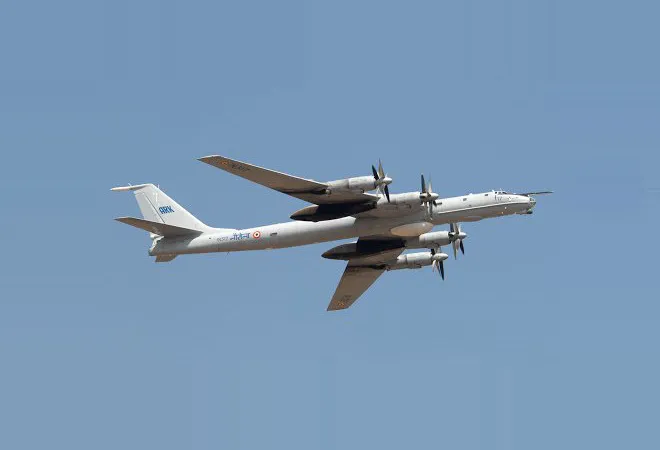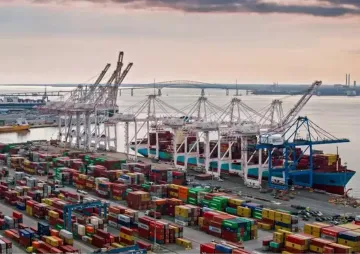 This article is part of the series — What to Expect from International Relations in 2021.
This article is part of the series — What to Expect from International Relations in 2021.
As 2020 draws to a close, it is worth reflecting on some trends that have shaped the maritime security landscape over the past decade. Asia’s maritime security environment was always challenging. Faced with a wide array of traditional and non-traditional security issues, maritime agencies always had their task cut out. Yet, developments in recent years have revealed the growing complexity of maritime threats. Despite some success in combating Somali pirates at the turn of the decade, regional navies have struggled to contain other irregular challenges such as drugs and contraband trafficking, armed robbery, human smuggling, and even illegal migration.
What has made the task more onerous is the rise of maritime terrorism. Since the 26/11 attacks in Mumbai, the distinction between traditional and irregular security in the maritime realm has progressively blurred, creating a ‘
hybrid’ category, whereby state and non-state actors have colluded to challenge other nations through a variety of overt and covert activities, targeting key vulnerabilities. For many, this has also meant a diversion of operational assets away from far-seas missions, into littoral security.
What has made the task more onerous is the rise of maritime terrorism.
The more significant challenge has been the failure of marine governance, in particular the inability of governments to tackle the vexing issue of
overfishing. The problem isn’t limited to the illegal and excessive exploitation of resources (as is often assumed); lax regulatory implementation and faulty policy, in particular the provision of
big subsidies to the fishing community, have helped unsustainable fishing practices thrive. If that weren’t enough, ocean acidification and
marine pollution has hit unprecedented levels — the recent
oil spill in the waters off Mauritius is a testament to the devastation ship-source pollution has wrought over the marine habitat. To add another layer of complexity, maritime forces in the Indo-Pacific region are increasingly being called upon for
humanitarian and disaster relief tasks, including non-combatant evacuations and search and rescue missions.
For sure, China’s aggressive rise poses the biggest challenge to peace and stability in the Indo-Pacific region. Since 2008, when Beijing first sent its warships to the Gulf of Aden for anti-piracy duties, the Peoples Liberation Army Navy’s (PLAN) littoral presence has grown considerably. So have Chinese
attempts to assert sovereign territorial claims in contested waters, such as in the South China Sea. Worryingly, Beijing has been reclaiming undersea features, building strategic outposts to aid
‘gray-zone’ operations. Chinese maritime militia activity in the waters off Malaysia, the Philippines, Indonesia, Vietnam and Japan seem an act of strategic intimidation, aimed at dominating contested spaces. Not surprisingly, regional states have drawn close to the United States, ever more dependent on American security guarantees to balance China. The PLA has also expanded its
footprint in the Indian Ocean, deploying submarines, and setting up a military logistics base in Djibouti.
Chinese maritime militia activity in the waters off Malaysia, the Philippines, Indonesia, Vietnam and Japan seem an act of strategic intimidation, aimed at dominating contested spaces.
For New Delhi, the more unsettling development is Beijing’s wooing of Indian Ocean island states like the Seychelles and Maldives with economic largesse and infrastructure development. Following incremental advances under its Belt and Road Initiative (BRI) in South Asia, China has sought to exert influence over Bangladesh, Myanmar, Sri Lanka and Pakistan, with offers to export military hardware. Meanwhile, China’s non-military presence in the Indian Ocean has substantially grown. Regular deployments of Chinese research vessels, intelligence ships and fishing fleets underscore Beijing’s strategic stakes in the region.
To secure their littorals, Indo-Pacific nations have sought an inclusive arrangement. Proponents of a ‘
rules-based security order’ have pushed to collectively implement measures to ensure open sea-lanes, and improve situational awareness (via shore-based radar chains, satellite systems and information fusion centers). As a ‘net security provider’ and ‘first responder’, the Indian Navy (IN) has been at the forefront of the endeavour in the Indian Ocean, focusing on inter-agency cooperation. The IN has also sought to build smaller partner capabilities to enable a more robust regional response.
And yet, in a post-COVID world — with tasks increasing and budgets shrinking — the challenges at sea are daunting. It is far from clear if the momentum of security efforts in recent years will carry forth into the future.
The views expressed above belong to the author(s). ORF research and analyses now available on Telegram! Click here to access our curated content — blogs, longforms and interviews.



 This article is part of the series —
This article is part of the series —  PREV
PREV


